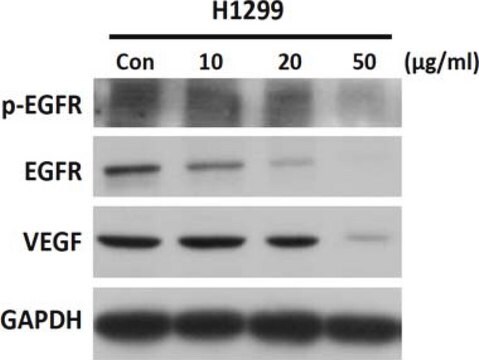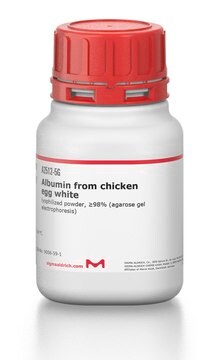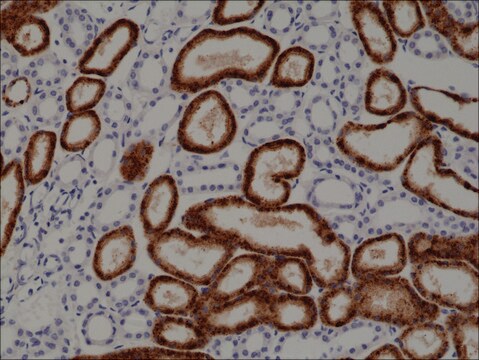MABF238-I
Anti-CD38 Antibody, clone 2H3-2
About This Item
Productos recomendados
origen biológico
mouse
Nivel de calidad
conjugado
unconjugated
forma del anticuerpo
purified antibody
tipo de anticuerpo
primary antibodies
clon
2H3-2, monoclonal
mol peso
calculated mol wt 34.33 kDa
reactividad de especies
human
envase
antibody small pack of 100 μg
técnicas
flow cytometry: suitable
isotipo
IgMκ
secuencia del epítopo
Extracellular domain
Nº de acceso Protein ID
Nº de acceso UniProt
Condiciones de envío
ambient
modificación del objetivo postraduccional
unmodified
Información sobre el gen
human ... CD38(952)
Descripción general
Especificidad
Inmunógeno
Aplicación
Evaluated by Flow Cytometry in Raji cells.
Flow Cytometry Analysis: 1 μg of this antibody detected CD38 in one million Raji cells.
Forma física
Almacenamiento y estabilidad
Otras notas
Cláusula de descargo de responsabilidad
¿No encuentra el producto adecuado?
Pruebe nuestro Herramienta de selección de productos.
Código de clase de almacenamiento
12 - Non Combustible Liquids
Clase de riesgo para el agua (WGK)
WGK 2
Certificados de análisis (COA)
Busque Certificados de análisis (COA) introduciendo el número de lote del producto. Los números de lote se encuentran en la etiqueta del producto después de las palabras «Lot» o «Batch»
¿Ya tiene este producto?
Encuentre la documentación para los productos que ha comprado recientemente en la Biblioteca de documentos.
Nuestro equipo de científicos tiene experiencia en todas las áreas de investigación: Ciencias de la vida, Ciencia de los materiales, Síntesis química, Cromatografía, Analítica y muchas otras.
Póngase en contacto con el Servicio técnico








